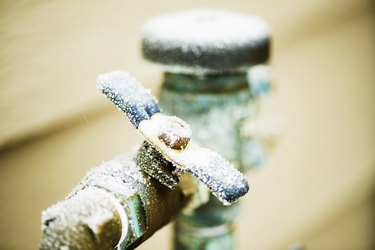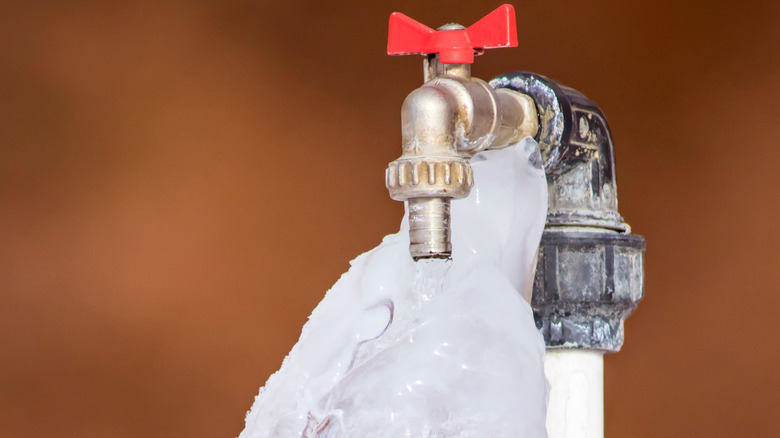Crucial Tips to Avoid Frozen Pipes in Cold Weather: Professional Guidance
Crucial Tips to Avoid Frozen Pipes in Cold Weather: Professional Guidance
Blog Article
We've found this great article about Prevent Frozen Pipes below on the internet and felt it made sense to talk about it with you on this page.

Winter can wreak havoc on your plumbing, particularly by freezing pipelines. Right here's how to avoid it from happening and what to do if it does.
Introduction
As temperatures decline, the risk of icy pipes boosts, possibly resulting in pricey repair work and water damage. Comprehending how to avoid icy pipes is important for property owners in cold environments.
Prevention Tips
Shielding prone pipes
Cover pipes in insulation sleeves or make use of warmth tape to shield them from freezing temperatures. Focus on pipes in unheated or outside areas of the home.
Heating strategies
Maintain interior spaces properly warmed, particularly areas with pipes. Open cupboard doors to permit cozy air to flow around pipelines under sinks.
How to recognize icy pipes
Look for decreased water flow from taps, uncommon smells or sounds from pipes, and noticeable frost on subjected pipes.
Long-Term Solutions
Architectural changes
Think about rerouting pipelines far from outside walls or unheated locations. Add added insulation to attic rooms, cellars, and crawl spaces.
Updating insulation
Buy high-quality insulation for pipelines, attics, and wall surfaces. Proper insulation aids maintain regular temperature levels and decreases the risk of icy pipes.
Securing Outside Plumbing
Yard hose pipes and exterior faucets
Disconnect and drain garden pipes prior to winter. Set up frost-proof faucets or cover outdoor taps with protected caps.
Recognizing Frozen Pipes
What creates pipes to ice up?
Pipelines freeze when exposed to temperatures below 32 ° F (0 ° C) for prolonged periods. As water inside the pipes freezes, it increases, taxing the pipeline wall surfaces and possibly causing them to burst.
Risks and problems
Frozen pipelines can bring about water interruptions, building damage, and pricey repair services. Burst pipes can flood homes and cause considerable architectural damages.
Indicators of Frozen Pipes
Determining frozen pipes early can stop them from breaking.
What to Do If Your Pipes Freeze
Immediate activities to take
If you presume frozen pipelines, maintain faucets available to relieve stress as the ice thaws. Utilize a hairdryer or towels taken in warm water to thaw pipes gradually.
Verdict
Avoiding frozen pipelines needs aggressive actions and quick reactions. By recognizing the causes, indicators, and preventive measures, home owners can secure their pipes during cold weather.
6 Proven Ways to Prevent Frozen Pipes and Protect Your Home
Disconnect and Drain Garden Hoses
Before winter arrives, start by disconnecting your garden hoses and draining any remaining water. Close the shut-off valves that supply outdoor hose bibs and leave the outdoor faucet open to allow any residual water to drain. For extra protection, consider using faucet covers throughout the colder months. It’s also important to drain water from any sprinkler supply lines following the manufacturer’s directions.
Insulate Exposed Pipes
Insulating your pipes is an effective way to prevent freezing. Pipe insulation is readily available at home improvement stores and is relatively inexpensive. Pay close attention to pipes in unheated areas such as the attic, basement, crawl spaces, or garage. Apply foam insulation generously to create a buffer against the cold. You can also wrap your pipes in heat tape or thermostat-controlled heat cables for added warmth.
Seal Air Leaks
Inspect your home for any cracks or openings that could let in cold air. Seal any holes around the piping in interior or exterior walls, as well as the sill plates where your home rests on its foundation. Additionally, make sure to keep your garage door closed unless you’re entering or exiting. Leaving it open creates a significant air leak that can lead to frozen pipes.
Allow Warm Air Circulation
During cold snaps, it’s essential to allow warm air to circulate evenly throughout your home. Leave interior doors ajar to promote better airflow. Open kitchen and bathroom cabinets to help distribute heat consistently around the rooms. If you have small children or pets, be sure to remove any household chemicals or potentially harmful cleaners from open cabinets for safety.
Let Faucets Drip
A small trickle of water can make a big difference in preventing ice formation inside your pipes. When temperatures drop significantly, start a drip of water from all faucets served by exposed pipes. This continuous flow helps prevent the water from freezing. Additionally, running a few faucets slightly can relieve pressure inside the pipes, reducing the chances of a rupture if the water inside does freeze.
https://choateshvac.com/6-proven-ways-to-prevent-frozen-pipes-and-protect-your-home/

As a passionate reader about Helpful Tips to Prevent Frozen Pipes this Winter, I figured sharing that piece of content was really useful. Make sure you take the time to share this content if you appreciated it. I thank you for reading our article about Prevent Frozen Pipes .
Booking Report this page